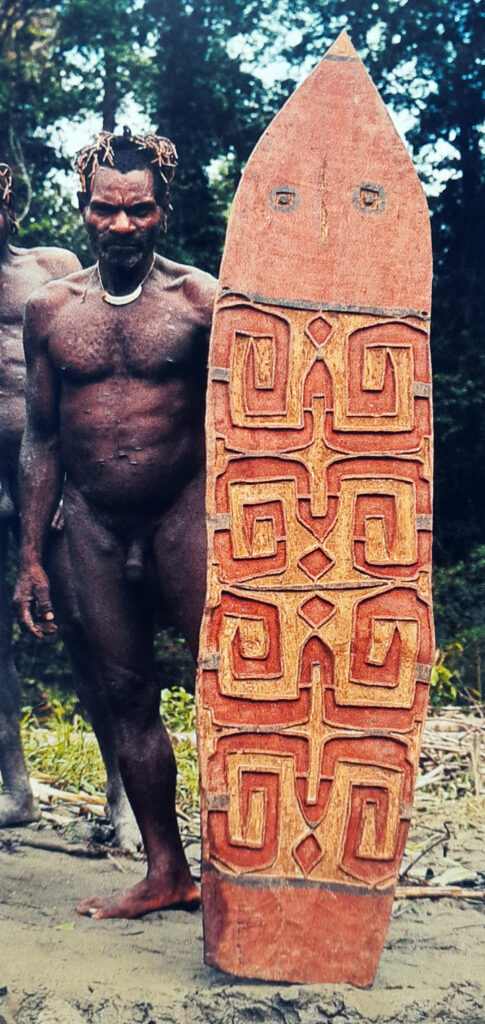In the early years of contact, Asmat shields were generally considered to be Asmat shields without distinction. Later, when the shields of the Brazza region became known, a distinction was made: Brazza shields and Asmat shields in general. After further study, the classification of Asmat shields was expanded to four, namely regions A, B, C, and D. Finally, in 1995, this classification had to be expanded to twelve, representing twelve Asmat groups, each with its own distinct cultural characteristics.
However, there are similarities between the groups in both style and representation. The shields in this catalog are presented in such a way that the reader will be better able to compare them and appreciate both the similarities and the differences.
The Asmat people attach great importance to the meaning and significance of shields. They shape their shields according to the norms dictated by the spirit world. The shield is not only a protective device used in warfare to deflect arrows and spears, but also an object of great magical power to ward off danger and protect both the individual and the community as a whole.
Shields are named after a former member of the clan, usually a successful war hero. The shield is then automatically influenced by his spirit and power. Designs and emblems increase the power of a shield.
The Asmat make shields either from flat roots or from mangrove trees. The wood of the mangrove tree is easy to work with, allowing the shield makers to shape the shields with tools made of stone, bone, and shell. Historically, the coastal Asmat obtained steel nails (sei fini) from shipwrecked planks that washed up on the Asmat coast and then washed upstream during the rainy season. They flattened the nails with stones and fashioned them into chisel-like tools for carving. Later, when contact with the West occurred, the Asmat acquired steel axes, knives, and inlays. Artists carved the blade and handle as a single unit. The handle is given a short loop or a long loop that widens and protrudes in the middle. In this place one to three holes are made, which are used as handles.
Throughout the Asmat region, artists carve human figures and symbols on shields. The figures are carved in relief and painted either red on a white background or white on a red background with small black embossed lines. In almost all parts of Asmat, the white color is obtained from the powder of burnt shells, while in the upstream areas, where shells are rare, the color is obtained from kaolin clay. The red color is obtained from burnt red clay, wild buni juice or pepagan from the wase tree. Black is obtained from charcoal.
In the following description of the images on the shield, the editors refrain from detailing what a particular image represents if it is not obvious, as similar images have different meanings from group to group, sometimes even from person to person within the same village.

